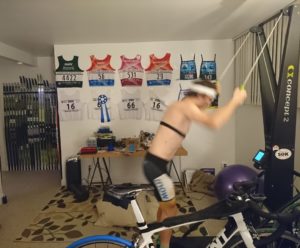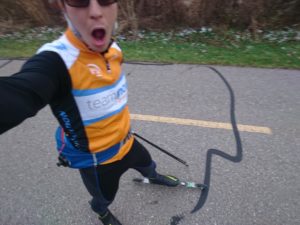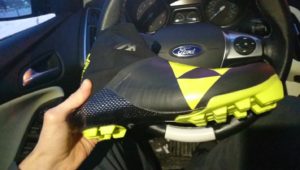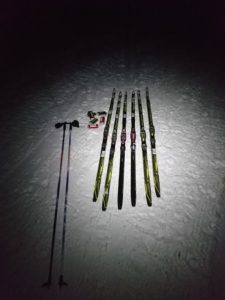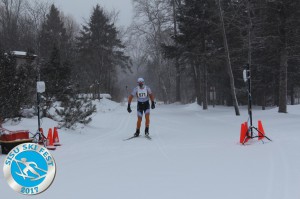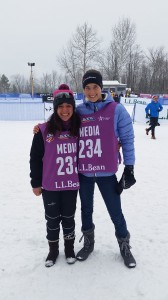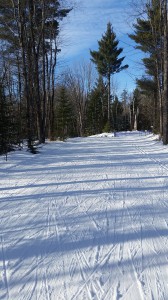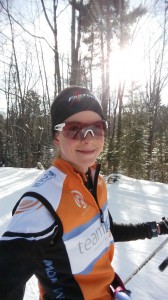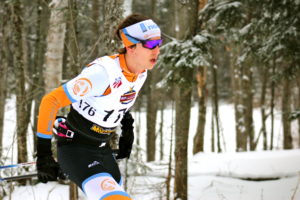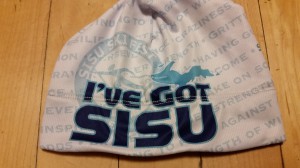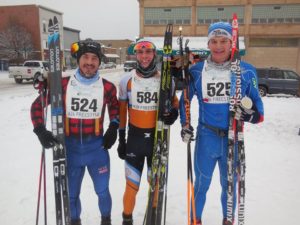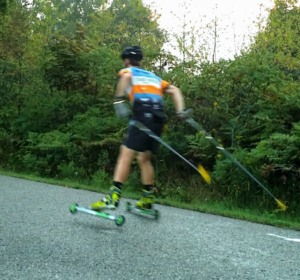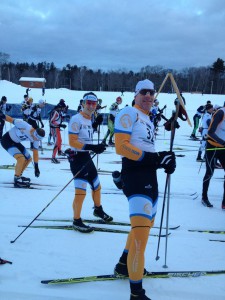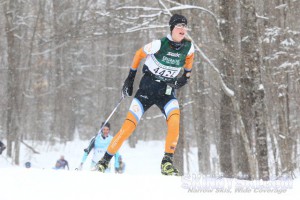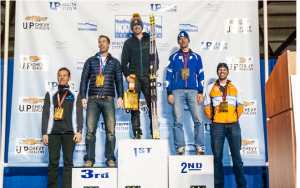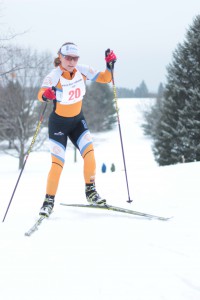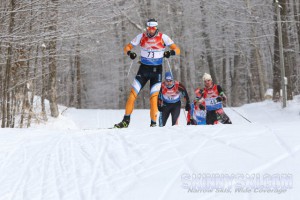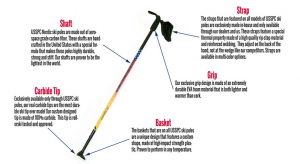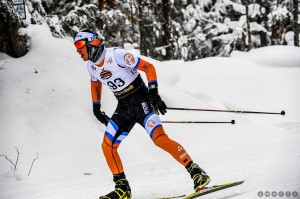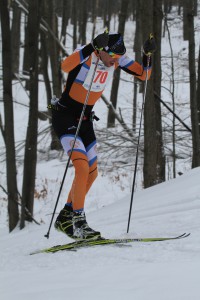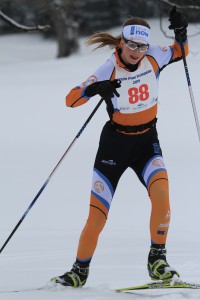–By Kaitlyn Patterson and Alex Vanias, OAM NOW Nordic skiers and cyclists
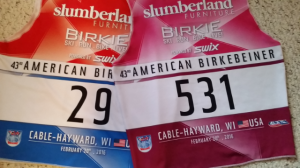
Each American Birkebeiner has its own personality and this year’s race definitely had a volatile and unpredictable flair. Taking place every February in northern Wisconsin, the race usually occurs under ideal ski conditions- plenty of snow and temperatures in the 20s. However, this El Nino year was going to throw some curveballs.
The Birkie is the biggest cross country ski event in North America, drawing 10,000 skiers from around the country and the world. It is a bizarre and awesome phenomenon that this quirky population gathers en masse every year to race 50 kilometers between the tiny towns of Cable and Hayward. Birkie is a date circled in red on countless cross country skiers’ calendars whether they are shooting for the win and huge prize purse, an age group award, a better wave placement, or surviving the endless hills of the Birkie trail. Everyone wants fast skis for this iconic event and when the weather creates tricky waxing conditions, it causes something close to mass hysteria. Which is exactly what happened this year.
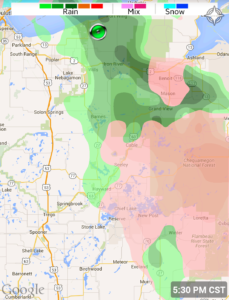
This is not what skiers want to see 36 hours before race time!
Early in the week leading to the race, the temperatures were very cold in Hayward- down to -15 F with 2-5 inches of fresh snow. However, the weather was predicted to warm up to the upper 30s and low 40s starting on Thursday, rain on Thursday evening and Friday, and remaining above freezing for race time on Saturday. In order to protect the snow base, the fresh snow on the course was not groomed and was closed to all skiers on Thursday and Friday. The course was not groomed until overnight on Friday before the race.
Usually at Birkie, several ski shops and wax services perform wax and ski tests all week and have a very good idea as to what is going to be fastest on race day. However, with the rapidly changing conditions and closed course, testing was of relative little value in the days before the race. Because of the wide range of possible snow temperature and structure, the professional skiers with wax service teams prepared many possible race skis in the days leading up to the race. Eventual women’s race winner Caitlin Gregg “narrowed” her ski choices down to 13 pairs the day before the race!
Since Alex and I don’t have a service team and have six skis between us (only one pair is mine but the varying flexes means I can often benefit from his fleet) meant that we had quite the task of preparing skis that could put us in the mix of the fastest skiers in the race. In addition, we have very little experience preparing skis for warm, wet conditions as it is quite uncommon during ski season in the Midwest.
We arrived in Cable on Wednesday night and went on a quick ski to check out the snow. We were met with fast, ideal conditions and a beautiful moon. Although we were wishing the race could be held before the weather became temperamental, we had no choice but to try to make the best of what we had. On Thursday, the research began in earnest and we headed to the expo in pursuit of bibs and a couple more tricks for optimal ski prep. We did not have any liquid fluoros and determined that it would be especially beneficial to add speed early in the race and help us make the initial separations. It also could be applied immediately before the start after our warm-up was completed (“fluoro” refers to fluorine which is a negatively charged atom that repels both water and dirt which are generally negatively charged. Fluro content is especially important in wet and dirty snow- which this year’s Birkie was both. For anyone interested in the physics, check out this article). After visiting the Swix tent at the expo and several ski shops, we finally found the swix HVC liquid flouro we were looking for. It was the last in stock at our last stop and likely the only one left within a several hundred mile radius.
Anxiety levels became much lower once Alex was confident we had enough tools to prepare competitive skis. Since we arrived in Cable early, we had all day on Friday to test and prepare skis. Friday morning offered comparable temperatures to race morning and although we didn’t have access to the course, we tested on a groomed section of trail that we hoped was similar to the race course.
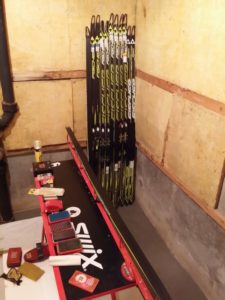
Where the magic happens!
We prepared all our skis with the same molybdenum high flouro baselayer to get an idea of which skis were running best. Despite the rain on Thursday and temperatures above freezing for a full 24 hours, the trail remained firm and surprisingly fast. It was pretty clear for both of us which skis were running best- my universal flex ski with a warm grind and Alex’s universal flex with an LS1 cold grind. Although Alex has invested in his ski fleet this year including a pair of Speedmax skis meant to be optimal for Birkie, the unusual conditions unfortunately made them irrelevant.
After setting our race skis aside, we then tested waxes and topcoats on the slower skis. Alex prepared one pair with Toko high-fluoro yellow paraffin and FC10 topcoat and the other Swix HF 8 with FC8X (red) topcoat. The yellow wax is meant for wetter and warmer conditions and was running a bit faster than the red which is a bit harder wax meant for slightly cooler conditions. However, a complicating factor was the course would be tilled before the race- possibly bringing up colder snow that was insulated underneath. But we had no idea the snow temperature or how transformed the snow would be. Despite the warm and wet conditions, we decided the added durability and potential of colder snow made the slightly harder red waxes our choice for paraffin (Swix HF8) and topcoat (FC8X). This thinking was backed up by testing and wax recommendations from other teams.
The HVC liquid flouro was the final layer and we tested it on our pre-race workout- each of us applying it to just one ski. It was noticeably faster and we were happy to see it lasted over 10-k as one drawback of many liquid fluoros is the limited durability.
However, after the testing and decision had been made, the rain began in earnest. A combination of rain and wintery mix fell much of the evening, creating a sheet of ice by the time we went to bed. With all the factors in play, Alex and I got up at 4am to check out the snow in case we had to make some last minute changes.
The course begins in a wide open field and we arrived in the pre-dawn darkness to find wet and soft conditions as the temperature remained about 38 degrees overnight. Although it was in contrast to the firm trail we had been testing on, our skis were moving well and hoped it would be enough.
The Birkie starts in waves with the elite women’s wave going off first and followed 20 minutes later by the elite men. Some years the leaders of the men’s race catch the female leaders and some years they don’t so that is almost a race in itself. The women’s elite field is very small- only about 60 racers and I was able to start on the front row of the huge start line with some of the best skiers in the world. This was probably one of the cooler moments of my ski career.
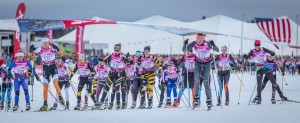
Start of the elite women’s field
(Photo credit- American Birkebeiner Ski Foundation©2016)
Despite a front row start, I fell back in the field a bit because the opening section was quite variable with sections of soft powder and icy patches. It took me a while to find a rhythm and by that time, the lead group was off the front. However, I was able to find a good group of five women to ski with and we took turns pulling. After the starting field, the course changed to be hard packed and fast- much different than anything we had tested on but my skis were great. Because of the high speeds, drafting was crucial and it felt very much like a bike race.
Meanwhile, Alex was fighting to stay with the lead pack- dangling off the back and having to make up the gaps once guys were dropped. Since the conditions were fast, drafting became so important to the race dynamics that many guys were skipping feeds instead of risking losing the draft. Although Alex’s skis were among the fastest in the soft snow, they were too soft to be optimal for the unexpected hard-packed trail. Eventually, Alex lost the pack and joined a chase group that had formed just behind. Although the pace was comfortable in the group, a fall at about 24k caused him to lose the group. Despite chasing hard to reestablish contact, the group acted like a peloton that is essentially impossible to catch. This left Alex to race the second half alone, stuck in no-man’s land and missing the benefit of any draft.
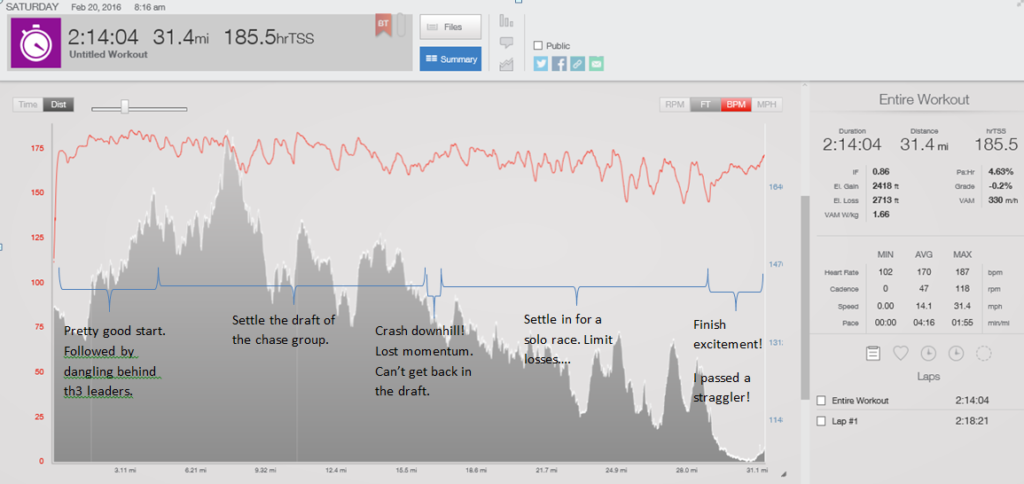
TrainingPeaks tells the story better than anything else
With about 18k to go I heard the sound of the lead snowmobile and I moved over as the lead pack of about 15 guys sped by followed several minutes later by a chase pack of 10. I was bummed to not see Alex but soon after he caught me solo. I was able to match him just for a few strides but is helped me to get enough of a gap on my group that they lost my draft and I took advantage of the next several steep climbs to shake them for good.
In the final 3 kilometers racers cross Lake Hayward before finishing on Main Street in Hayward. The recent rain made for a slushy crossing with some ankle deep standing water which made for an especially challenging final push to the finish.
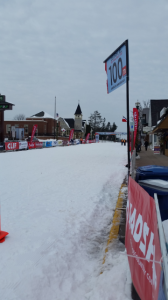
The American Birkebeiner finishes in downtown Hayward to a extremely supportive crowd
Alex stopped the clock at 2:14:09 averaging over 14 mph for 31 miles, claiming 25th place and 13th American in a very competitive international field. I finished in 2:40:24, taking 18th in the women’s race as the 12th American. We were the first male and female finishers from Michigan including both upper and lower peninsulas. It was also an improvement over last year’s Birkie finish for both of us.
Both men’s and women’s overall titles were won by Americans as Caitlin Gregg won her fourth Birkie title and David Norris overtook six Europeans in the final kilometer for an upset win.
Although we had both been hoping to crack the top ten, the course conditions did not play to our strengths and we were somewhat limited by a small fleet of skis. Considering the challenges of the weekend, it was a very solid showing from both of us.
Jon Morgan also represented Team OAM Now, skiing out of wave 1 and finished his 24th! Birkie in 2:53:26. Jon was content with his race considering the unrelenting hills of the course and the rebuilding he has had to do this year after his hamstring injury last year at Noque.
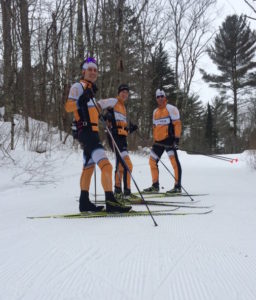
Team OAM Now taking advantage of the trails to ski and test before the race!
The ski season is almost done for the nordic team with only two more race weekends. This weekend is Black Mountain in Cheboygan followed by Great Bear Chase in Calumet the first weekend in March.
The complete searchable Birkie results can be found here and an article about the winners by FasterSkier.
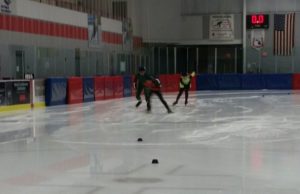 track race in Midland before ski season. In the image below, I’m the guy in fluorescent green. I’m actually very bad at short track. It is very much a technique sport, and my VO2 helped me very minimally. It may or may not have made my skate skiing more efficient, though!
track race in Midland before ski season. In the image below, I’m the guy in fluorescent green. I’m actually very bad at short track. It is very much a technique sport, and my VO2 helped me very minimally. It may or may not have made my skate skiing more efficient, though!





